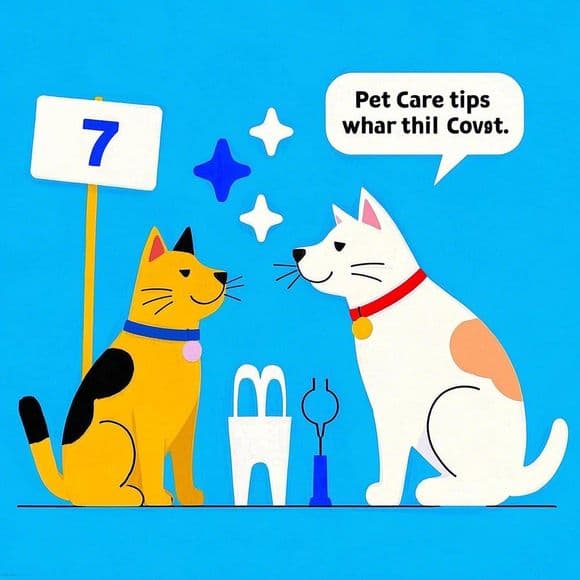Understanding the Importance of Core Vaccines in Cats

Understanding the Importance of Core Vaccines in Cats
- Essential Protection Against Life-Threatening Diseases: Core vaccines are fundamental in safeguarding felines from severe health threats. These vaccines provide immunity against several highly contagious and potentially fatal diseases, ensuring that cats remain healthy and reducing the risk of complications or death.
- Feline Rhinotracheitis Virus/Herpesvirus 1 (FVR): This virus is one of the primary components of the FVRCP vaccine. It causes feline viral rhinotracheitis, a highly contagious respiratory disease that can lead to severe upper respiratory infections and complications.
- Calicivirus: Another critical component of the FVRCP vaccination, calicivirus also contributes significantly to respiratory illnesses in cats. This virus is responsible for causing stomatitis (oral inflammation) and other respiratory symptoms, making it a serious threat to feline health.
- Panleukopenia (Feline Distemper): Panleukopenia is a highly infectious disease that can cause severe gastrointestinal issues and bone marrow suppression. It is particularly dangerous in young cats or those with weakened immune systems.
- Annual Administration for Indoor Adult Cats: The FVRCP vaccine is recommended to be administered annually to indoor adult cats, even if they do not come into direct contact with outdoor cats. This regular booster ensures continuous protection against the aforementioned viruses and helps maintain a strong immune response.
- Preventing Respiratory Disease: By administering this vaccine on an annual basis, owners can prevent respiratory diseases that are common among cats. These illnesses can be particularly dangerous for indoor cats, as they may have limited exposure to outdoor pathogens but still require immunity against indoor-borne viruses.
- Health and Well-being: The regular administration of the FVRCP vaccine not only protects individual cats but also contributes to overall community health by reducing the spread of these diseases within the cat population.
In summary, core vaccines, particularly the FVRCP, play a crucial role in maintaining feline health. Their annual administration ensures that indoor adult cats remain protected against life-threatening respiratory diseases, promoting both individual and communal wellness.
Understanding the Importance of Core Vaccines in Cats
- Rabies Vaccination: Rabies vaccination is an essential component of cat health and public safety, serving as a critical defense against zoonotic diseases. Zoonotic diseases are those that can be transmitted from animals to humans, posing significant health risks. For cats, rabies is particularly concerning due to its high mortality rate and the ease with which it can spread through bites or scratches.
- Preventive Measure: The rabies vaccine not only protects cats from contracting the virus but also prevents them from becoming vectors for human infection. This is crucial because once a cat contracts rabies, it becomes highly infectious, potentially infecting other animals and humans in its environment. Administering the vaccine at regular intervals ensures ongoing protection against this deadly disease.
- Frequency of Booster Shots: The frequency of rabies vaccinations typically varies based on local regulations and recommendations from veterinary professionals. In most cases, the initial rabies vaccination is given when a cat is around 12 to 16 weeks old. After this, boosters are usually administered every one to three years, depending on the specific type of vaccine used and regional laws. Ensuring that cats receive these periodic vaccinations is vital for maintaining their health and safeguarding public welfare.
- Public Health Implications: By ensuring that cats are vaccinated against rabies, communities can significantly reduce the risk of human exposure to this deadly virus. This not only protects individual pet owners but also contributes to broader public health initiatives aimed at preventing outbreaks of rabies in both domestic animals and wild populations. Regular vaccination programs, therefore, play a crucial role in maintaining overall community health and safety.
Understanding the Importance of Core Vaccines in Cats
The Feline Virus Rhinotracheitis (FVR), Calicivirus (C), and Panleukopenia (P) vaccine, commonly known as the FVRCP vaccine, plays a crucial role in protecting cats against respiratory diseases. This combination vaccine has been extensively studied and shown to provide excellent protection against these common feline illnesses. The FVR component targets a highly contagious viral infection that can cause severe respiratory symptoms, including sneezing, coughing, and fever. Calicivirus is another significant threat, leading to oral ulceration, pneumonia, and upper respiratory infections. Lastly, the Panleukopenia component protects against feline distemper, a highly contagious and often fatal disease affecting the immune system.
Annual vaccination with FVRCP is essential for maintaining this protection. Despite initial immunization during kittenhood, which typically includes three to four doses between 6-16 weeks of age, booster shots are necessary to ensure ongoing immunity. The World Small Animal Veterinary Association (WSAVA) and the American Association of Feline Practitioners (AAFP) recommend annual vaccinations for adult cats in environments where they may be exposed to other cats or in areas with a high incidence of disease. Additionally, older cats or those living in households with an unvaccinated cat may require more frequent boosters. Regular vaccination not only protects individual cats but also contributes to community health by reducing the spread of these potentially deadly diseases.
In conclusion, the FVRCP vaccine is indispensable for safeguarding cats against respiratory infections. Its proven efficacy and the critical need for annual booster shots underscore its importance in a comprehensive feline healthcare plan. By adhering to this protocol, cat owners can significantly reduce the risk of complications and mortality associated with these diseases, ensuring their pets lead healthier lives.
Understanding the Role of Non-Core Vaccines in Multi-Cat Houses or Shelters
In multi-cat households and shelters, maintaining optimal health standards is crucial to prevent the spread of diseases. One of the key strategies involves the administration of non-core vaccines such as Bordetella and Chlamydophila felis (commonly known as chlamydia). These vaccines play a significant role in preventing respiratory disease outbreaks among feline populations.
Bordetella, often administered through intranasal or intramuscular routes, is specifically designed to protect against Bordetella bronchiseptica, a common cause of upper respiratory infections in cats. This bacteria can lead to symptoms such as coughing, sneezing, and discharge from the eyes and nose. Administering the Bordetella vaccine helps build immunity against these pathogens, thereby reducing the likelihood of outbreaks.
Similarly, Chlamydophila felis vaccines are effective in combating chlamydial conjunctivitis, a condition that can result in severe eye irritation, redness, and discharge. This vaccine is particularly important for cats living in close quarters, as it can spread easily through direct contact or airborne particles. By vaccinating the cats, owners and shelter managers can significantly reduce the risk of these respiratory infections, ensuring a healthier environment.
It is imperative to follow the manufacturer's instructions when administering these vaccines. Each vaccine has specific protocols regarding dosing, timing, and frequency that must be adhered to ensure effectiveness. Additionally, consulting with a veterinarian before starting any vaccination program is crucial. Veterinarians can provide valuable insights into the cat’s overall health, recommend appropriate vaccines based on their exposure risks, and advise on potential side effects or interactions.
In conclusion, non-core vaccines like Bordetella and Chlamydophila felis are essential tools in managing respiratory diseases within multi-cat environments. By administering these vaccines according to the manufacturer's instructions and under professional veterinary guidance, cat owners and shelter managers can significantly reduce the risk of outbreaks and maintain a healthier living environment for their feline companions.
The role of non-core vaccines in multi-cat houses or shelters is an important consideration for maintaining the health and well-being of feline populations. Among these non-core vaccines, the Feline Infectious Peritonitis (FIP) vaccine stands out as a critical topic for discussion.
- Insufficient Protection from FIP Vaccine: The first key point to understand is that the FIP vaccine does not provide sufficient protection against Feline Infectious Peritonitis. Studies and clinical experiences have shown that while the vaccine can stimulate an immune response, it does not reliably prevent FIP in all cases. This limitation arises because FIP primarily develops from a mutated form of the feline coronavirus (FCoV), which means that vaccinated cats may still be at risk if they are exposed to this virus.
- Case-by-Case Consideration: Despite the limitations of the FIP vaccine, it can sometimes be considered on an individual basis in consultation with a veterinarian. This decision should be made carefully and based on several factors including the specific circumstances of the cat or cats, their environment, and the prevalence of FCoV within the shelter or household. For instance, if there is a high risk of exposure due to ongoing FCoV transmission among the cats, vaccination might be recommended as part of an integrated preventive strategy.
- Consultation with a Veterinarian: It is crucial to involve a veterinarian in any decision-making process regarding the administration of the FIP vaccine. A veterinarian can provide personalized advice based on the specific needs and health status of each cat, as well as the overall conditions within the multi-cat environment. This collaborative approach ensures that any potential benefits outweigh the risks associated with the vaccination.
In summary, while the FIP vaccine is not recommended for routine use due to its limited efficacy, it can still play a role in managing risk under certain circumstances. A thorough understanding of these limitations and an informed decision-making process are essential when considering this vaccine for cats in multi-cat households or shelters.
The evolution of feline vaccination guidelines reflects a dynamic interplay between advancing veterinary science and practical clinical applications. The Feline Vaccination Advisory Panel (FVAP) has recently updated its recommendations to align with the latest scientific insights into feline diseases, ensuring that veterinarians can make informed decisions about vaccine use for their feline patients.
- Reflecting Scientific Advances: These updates are driven by evolving knowledge in virology and immunology. For instance, recent studies have highlighted the varying degrees of viral shedding and pathogenicity among different strains of common feline diseases like panleukopenia and calicivirus. This has led to a more nuanced approach to vaccination protocols.
- Optimizing Vaccine Efficacy: The new guidelines emphasize the importance of tailoring vaccination schedules based on individual cats' risk factors. For example, indoor-only cats have a lower exposure risk compared to outdoor cats, which may require different vaccine regimens. This personalized approach aims to maximize protection while minimizing adverse reactions.
- Minimizing Unnecessary Administration: A key objective is reducing the frequency and number of vaccines administered without compromising efficacy. The FVAP has proposed a "core plus" vaccination strategy where core vaccines are given regularly, but non-core vaccines are reserved for specific circumstances or based on geographical risk factors.
Overall, these updates reflect a commitment to evidence-based medicine and patient welfare, ensuring that feline vaccinations remain both effective and ethically sound in veterinary practice.
The evolution of feline vaccination guidelines has seen significant advancements in recent years, with a particular focus on adjusting the FeLV (Feline Leukemia Virus) vaccine administration schedule. These updates reflect a growing emphasis on ensuring that vaccines are administered both safely and effectively, while also considering the unique risk factors associated with each individual cat.
- Recent Updates to FeLV Vaccine Administration Schedule:
- The latest guidelines now recommend more flexible administration schedules for the FeLV vaccine, allowing veterinarians to tailor recommendations based on specific cat populations. For instance, indoor-only cats are generally at lower risk of contracting FeLV and may not require annual vaccinations.
- Outdoor or free-roaming cats, however, face a higher exposure risk due to potential contact with infected cats. Therefore, these guidelines prioritize regular vaccination for this group to minimize the risk of infection.
- Prioritizing Safe and Effective Vaccine Use:
- The new guidelines underscore the importance of balancing vaccine efficacy with safety, particularly in light of recent research on vaccine-related side effects. This includes monitoring cats closely after administration and understanding that not all vaccines are necessary for every cat.
- Factors such as a cat's age, health status, lifestyle (indoor vs. outdoor), and geographical location play crucial roles in determining the necessity and frequency of vaccinations.
- Considering Individual Cat Risk Factors:
- Personalized approaches to vaccination have become increasingly important, with veterinarians encouraged to assess each cat’s risk factors before recommending a vaccine regimen. This personalized approach ensures that vaccines are administered only when truly necessary, thereby reducing unnecessary stress on the cat and minimizing potential side effects.
- For example, cats in high-risk environments or those with compromised immune systems might require more frequent or specific vaccinations than their lower-risk counterparts.
These changes reflect a shift towards more informed and individualized care for feline patients, ensuring that vaccination programs are both effective and compassionate. By prioritizing the safe and effective use of vaccines while considering each cat’s unique risk factors, these updated guidelines aim to enhance overall feline health and well-being.
Myth: Core vaccines are unnecessary for healthy cats.
Reality: This common misconception can have serious consequences for your feline companion's health. Vaccines like the FVRCP (Feline Viral Rhinotracheitis, Calicivirus, and Panleukopenia) and Rabies vaccines are essential preventive measures that provide critical protection against life-threatening diseases. These core vaccines should be administered annually to all indoor adult cats.
- Protection Against Life-Threatening Diseases: The FVRCP vaccine protects your cat from three highly contagious and potentially fatal viruses: feline herpesvirus, calicivirus, and panleukopenia (feline distemper). These viruses can cause severe respiratory infections, fever, and even death. Additionally, the rabies vaccine is crucial because rabies is a deadly virus that can be transmitted to both cats and humans.
- Prevention of Respiratory Infections: FVRCP specifically targets viruses responsible for feline upper respiratory infections, which are highly prevalent in multi-cat households or environments. Symptoms include sneezing, coughing, fever, and eye inflammation. Untreated cases can lead to more serious complications such as pneumonia.
- Annual Boosters for Long-Term Protection: While the initial series of core vaccines is crucial, maintaining annual vaccinations ensures your cat's immune system remains vigilant against these diseases. The immunity from the initial vaccinations wanes over time, making regular boosters necessary to provide continuous protection.
By adhering to the recommended vaccination schedule and administering core vaccines annually, you are ensuring that your indoor adult cat stays healthy and protected against a wide range of serious illnesses. Ignoring this advice could result in severe health risks for your pet, including potential lifelong health issues or even death.
Myth: Vaccination increases the risk of vaccine-related reactions.
Despite widespread concern, the reality is that the benefits of cat vaccinations significantly outweigh any potential risks. While it's true that some cats may experience minor side effects such as mild soreness at the injection site or a slight fever for a short period after vaccination, these are generally transient and manageable (Key Point 1). According to numerous veterinary studies, only about 5% of vaccinated cats will have any adverse reactions (Key Point 2).
Moreover, modern vaccines undergo rigorous testing to ensure their safety and efficacy. They are designed to stimulate the immune system effectively while minimizing potential side effects (Key Point 3). Vaccinations help protect cats against serious diseases such as feline leukemia virus (FeLV) and rabies, which can be life-threatening if contracted (Key Point 4). By preventing these illnesses, vaccines not only save lives but also reduce the need for expensive treatments later on.
In summary, while it's important to acknowledge that there is a very small risk of vaccine-related reactions, the vast majority of cats can and do receive vaccinations without significant issues. The long-term benefits of vaccination in safeguarding feline health far outweigh these minor risks (Key Point 5).




